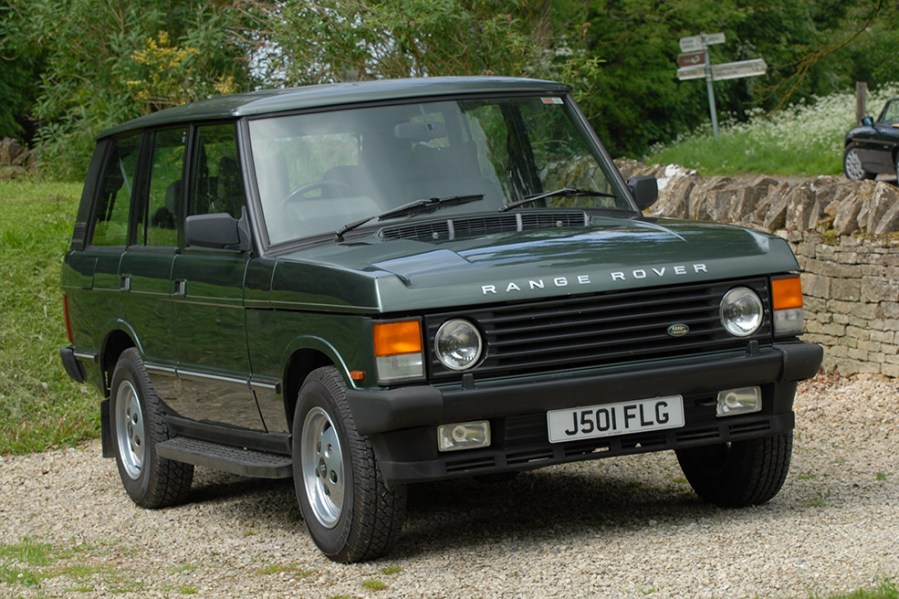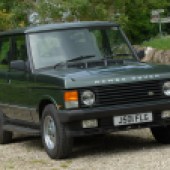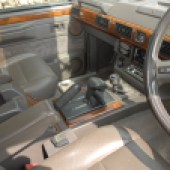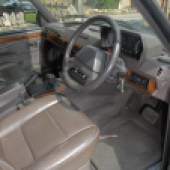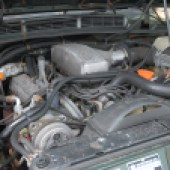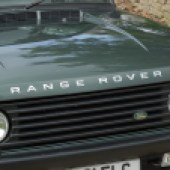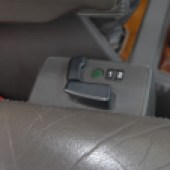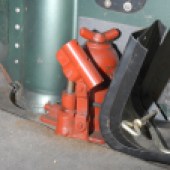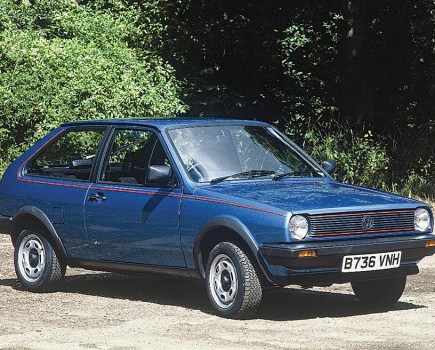The Range Rover Classic could well be the perfect multi-purpose classic: practical, spacious and easy to work on. Here’s everything you need to know
If you’ve been keeping an eye on early Range Rover Classic values lately, you’ll have noticed just how much the three-door models have surged, driven in no small part by their remarkable usability. Today the Range Rover is seen as a luxury icon, but when it first broke cover it was rugged, functional and still a cut above its agricultural Land Rover relatives. A collectible classic wasn’t exactly what its designers had in mind – the brief was simply to create a more civilised Land Rover, not the prestige executive vehicle it would eventually become.
The idea stemmed from Solihull’s recognition that the original Land Rover was compromised as a road car, even in Tickford-built station wagon form. A prototype dubbed the Road Rover had been developed as early as 1951, based on the Rover P4 and more akin to a high-riding estate than an off-roader. With Land Rover sales still buoyant, however, it was quietly shelved.
By the early 1960s, Rover’s management was eyeing the US market. Fact-finding trips across the Atlantic revealed a growing demand for leisure 4x4s such as the Jeep Wagoneer and Ford Bronco. The Road Rover concept was revived, but this time with permanent four-wheel drive and, at the suggestion of engineering chief Spen King, coil spring suspension. Trials with a Bronco had shown that front coils gave superior articulation and traction compared to leaf springs, then considered essential for off-road work.
Prototypes were built on a simple box-section chassis with a 99.9-inch wheelbase, earning the internal title ‘100-inch Station Wagon’. Coil springs doubled axle travel compared with a Land Rover, while motive power came from the ex-Buick V8 – some 90kg lighter than Rover’s straight-six, yet with more power, torque, and crucially, American V8 appeal. Ironically, despite being designed with the US in mind, the Range Rover wouldn’t reach the States until 1987 thanks to the cost of meeting emissions and safety requirements.
The early prototypes ran imported Buick units with Rochester carbs swapped for Zenith-Strombergs to handle steep inclines. Styling was plain and functional, with David Bache later brought in merely to refine it. A steel inner structure carried aluminium outer panels, although the bonnet and tailgate remained steel.
Signed off in 1968, the production Range Rover arrived in 1970 as a three-door, powered by the 3.5-litre carb-fed V8 mated to a four-speed manual. Strangely, Land Rover prioritised development of an automatic and air conditioning over a four-door body. It was left to Schuler to develop an auto and five-speed in 1979, while Swiss coachbuilder Monteverdi launched a four-door in 1980 with input from Rover engineers.
Following Michael Edwardes’ restructuring of BL in 1979, Land Rover gained greater autonomy. A facelift came in 1980 with new badging and lights, while Land Rover’s own four-door and five-speed gearbox followed in 1981, joined by a factory automatic in 1982. By now the Range Rover was moving upmarket, swapping rubber mats and vinyl trim for carpets and velour. A plush Wood & Pickett-built ‘In Vogue’ edition, inspired by a Vogue magazine photo shoot, later evolved into a production model and eventually a permanent trim level.
Updates throughout the 1980s brought better refinement: one-piece front windows and improved heating in 1985, fuel injection in 1986, and a four-speed ZF automatic. The same year, a 2.4-litre VM diesel joined the range. By 1987, the fuel filler was hidden behind a flap, and in 1988 a quieter chain-driven transfer box arrived.
The V8 grew to 3.9 litres in 1989, paired with a revised dash that finally centralised the radio, while ABS debuted on the Vogue SE – a first for any off-road 4×4. The ‘soft dash’ models with Discovery-style interiors appeared in 1994. Diesel power was uprated too: the VM enlarged to 2.5 litres in 1990, replaced by the 200Tdi in 1992, and upgraded again to the 300Tdi in 1994, paired with the R380 manual gearbox.
Specials included the 1991 CSK limited edition, commemorating Spen King, with 200 two-door cars fitted with the 3.9 V8, ABS, sports suspension and unique trim. In 1992, the LSE stretched the wheelbase to 108 inches and introduced electronic air suspension (ECAS), alongside a new 4.2-litre V8 producing 200bhp.
Production of the original Range Rover continued until February 1996, by which time it had officially gained the ‘Classic’ suffix. By then, 317,615 examples had been built – a remarkable run for a car born as a practical Land Rover alternative and ending as a luxury icon.
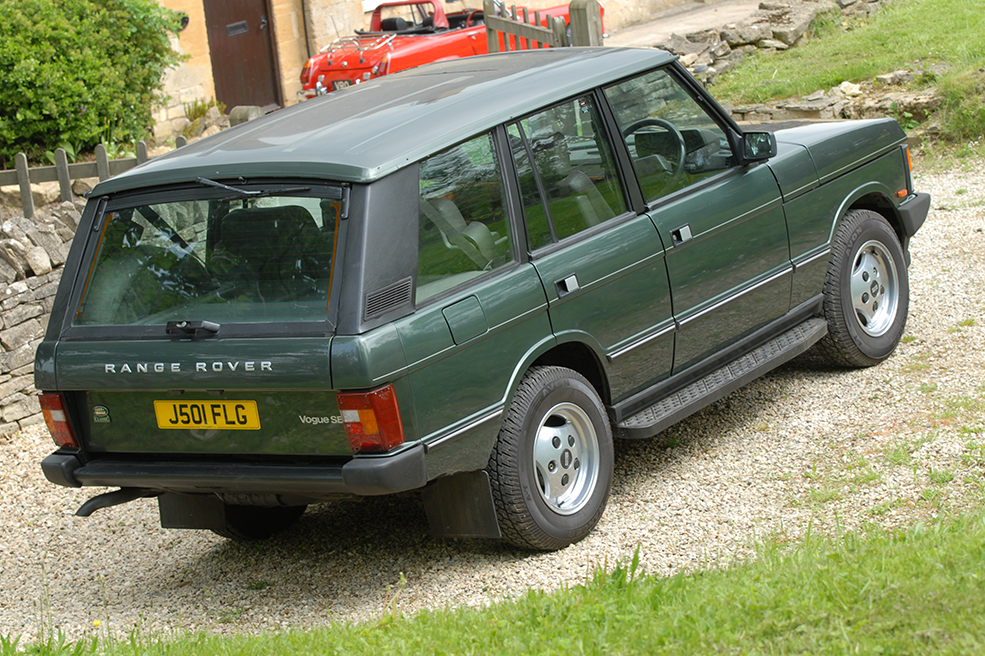
Range Rover Classic values
Range Rover Classic values have risen sharply in recent years, with three-door models commanding the strongest money. Tired project cars remain the cheapest entry point, but with corrosion commonplace and often costly to rectify, restoration costs can quickly eclipse purchase price. Usable drivers with tidy interiors and presentable paint now sit comfortably in the £10,000-£20,000 bracket, offering a good balance of originality and enjoyment. At the top end, concours-standard restorations and rare limited editions such as the CSK or early Vogue specials can comfortably exceed £50,000, reflecting both their historical significance and thinning numbers after so many have been run into the ground by farmers and green-laners.
Insurance Costs
1984 Range Rover 3.5 V8 5dr, £7000 value.
Example quote: £142.67 or £160.67 with Agreed Value.Quotation supplied by Lancaster Insurance. Tel: 01480 400761
Quote based on a 45-year-old marketing manager, access to another car, no claims or convictions, club member, 3000 miles per year, no modifications, living in SP2 0HL. Disclaimer: Subject to underwriting criteria. An additional charge may be payable. Authorised and regulated by the Financial Conduct Authority.
Bodywork
The Range Rover Classic’s bodywork gives a deceptive impression, as most of the exterior panels are aluminium. This means even severely corroded examples can appear surprisingly tidy at first glance.
However, those lightweight outer panels are bolted to a steel central structure, and it’s here where rust can really take hold. Door shuts are easy to inspect and will give an initial idea of condition, but you’ll also want to check the sills, inner arches and floorpans. Pay close attention to the areas around the rear seatbelt mountings, as corrosion here can result in an MoT failure. As with the Series Land Rovers, the bulkhead is another notorious weak point and warrants a very close look.
Curiously, many Land Rover specialists believe the later ‘soft dash’ models suffer more badly with rust than the earlier cars. They corrode in all the usual places, but also tend to rot around the bulkhead and scuttle corners. These repairs are neither simple nor cheap, requiring extensive dismantling if done properly. The steel upper tailgate frame is infamous for rusting through, and the lower tailgate suffers similarly – although aluminium replacement panels are now readily available and provide a long-term fix.
The chassis is another key area to assess for heavy corrosion or questionable patchwork. Fortunately, the Range Rover’s generous ground clearance makes it easy to get underneath without a lift. No particular section is more vulnerable than another, though the area above the rear axle deserves extra scrutiny. A thorough inspection of the whole structure is best, as this will also reveal if the car has seen extensive off-road use. Don’t overlook the body-to-chassis mounting points, which can deteriorate badly.
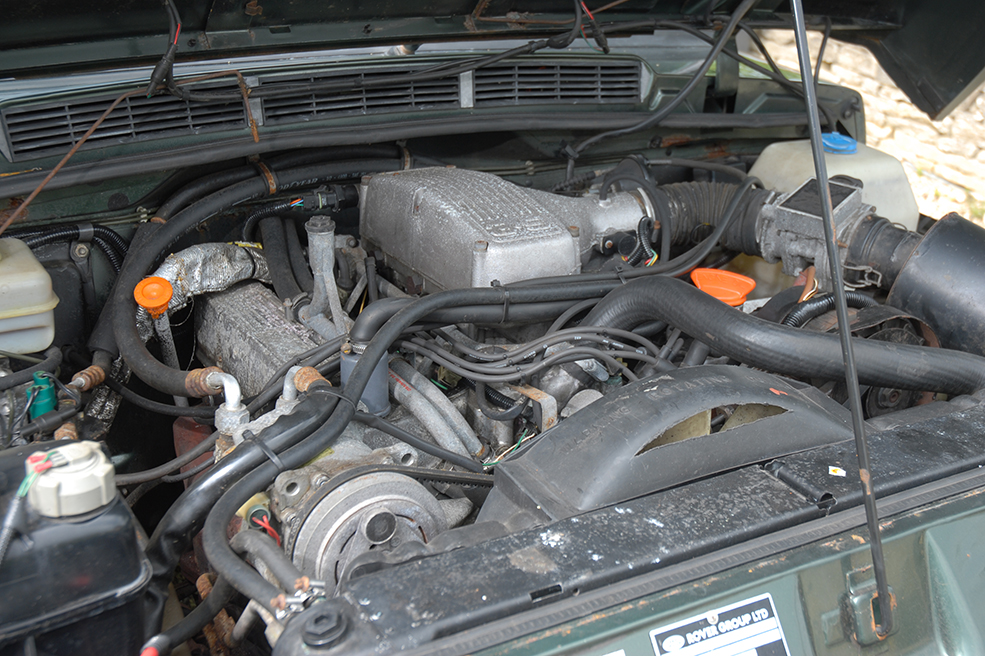
Engine and transmission
Of the two, it’s generally the petrol engines that prove more dependable with age, and among these the original 3.5-litre V8 is regarded as the strongest. This was, after all, the capacity for which the unit was first engineered, and thanks to its short stroke and modest power output, it remains relatively unstressed.
By contrast, the later 3.9 and 4.2-litre versions fitted to the Range Rover Classic are known for cracked bores. The recognised cure is the fitment of ‘top hat’ liners – a labour-intensive and costly machining job, but one which retains the original engine number, unlike a complete replacement.
Cooling systems can also suffer if antifreeze hasn’t been regularly renewed, with corrosion and sludge build-up leading to overheating. Be sure to look for the usual tell-tale signs under the bonnet.
The V8s demand frequent oil changes and will deteriorate rapidly if neglected. A rattly top end may be rescued with a fresh camshaft and followers, while excessive smoke might point only to a clogged breather system – though it could just as easily indicate serious wear. Poor running and heavy fuel consumption are often down to nothing more than a tired distributor.
Diesel models are prone to worn injection pumps, but the bigger concern is the timing belt. If it hasn’t been replaced recently, do so without delay on any new purchase. The VM units also feature separate cylinder heads per pot, which must be torqued down correctly.
Generally speaking, the automatic gearboxes are more forgiving, with faults usually obvious: blackened fluid, erratic shifting or slipping. Manual boxes often endure harder lives, especially as buyers tended to favour the auto for towing. Those who persisted with the manual may have punished the first-to-second change when dragging a heavy trailer, leading to weak synchros and crunching. On both LT77 and R380 gearboxes, a pronounced clunk on and off the throttle suggests a worn mainshaft.
The LT77 is also notorious for running low on oil without warning, so it’s worth confirming the level before it seizes altogether.
Finally, always check low range engages properly – replacement of either gearbox or transfer box is a long and heavy undertaking.

Suspension, steering and brakes
The Range Rover Classic was among the first true off-roaders to feature all-round disc brakes, and the system remains simple and DIY-friendly. On ABS-equipped cars, an illuminated warning light is often down to a poorly seated wheel speed sensor. When correctly installed, there should be a fixed air gap between the sensor and the hub ring; firmly pushing the sensor home usually cures the fault. If not, suspect a worn wheel bearing forcing the sensor out of alignment.
On non-ABS models, suspension is a straightforward affair with coil springs, the only complication being the Boge self-levelling strut at the rear. When these fail, many owners fit uprated springs instead, as the strut has been unavailable for years. While remanufactured replacements do exist, the prices are steep – we’ve seen them advertised close to £2000.
The LSE’s air suspension can deter potential buyers, but it’s actually more robust than the later P38a system. The Classic’s setup was adapted from a heavy goods vehicle, giving it strength and durability, while its compressor was mounted beneath the car, away from engine bay heat that plagued its successor.
Steering boxes are known to leak past their seals, often when held on full lock. Though messy, it usually looks worse than it is, and you can get by with topping it up for a while – but ultimately, a replacement unit is the only proper cure.
A steering shimmy is commonly caused by a worn steering damper, with uprated alternatives readily available. Worn radius arm bushes can also cause front-end vibration, though replacement is a straightforward job.
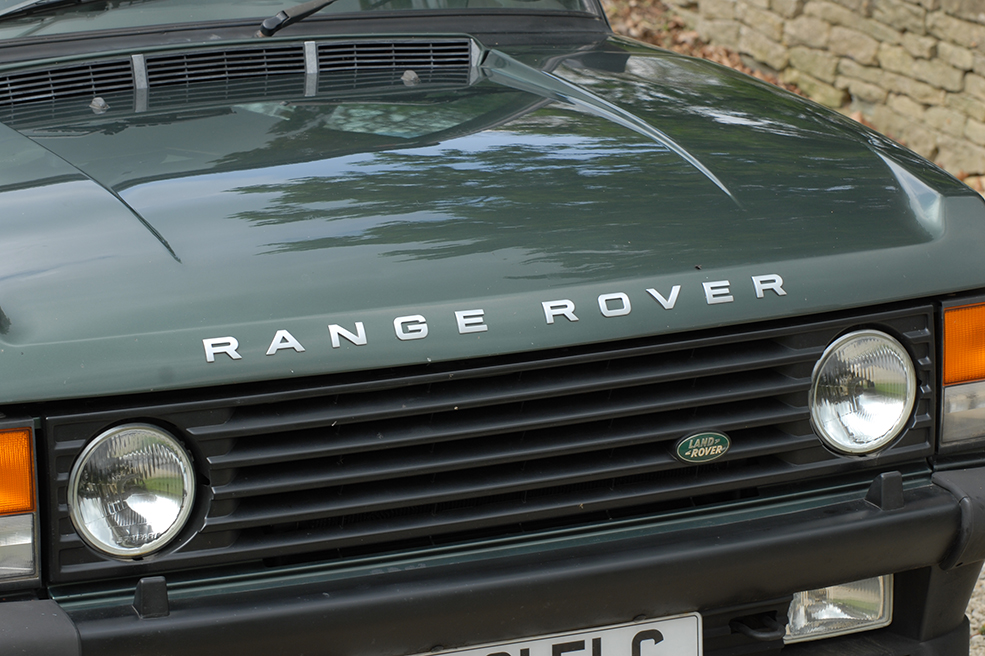
Interior
Range Rover Classic seats can be reupholstered in vinyl, velour or leather, while fresh door card inserts are available and a new carpet set is a straightforward way to brighten up a tired interior. Do bear in mind, however, that many of the smaller trim items are no longer produced, so if you’re looking at a car with bits missing it pays to research how easy – or difficult – replacements will be to source.
It may not reach the lofty benchmarks set by today’s Range Rover line-up, but the Classic carries its own distinctive appeal. The cabin blends comfort with a pleasing simplicity, not unlike what you’d find in a well-appointed Discovery. And then there’s that driving position: perched high with a clear view across the squared-off clamshell bonnet, you’ll soon appreciate both the reassuring sense of security and the surprising agility, helped along by the easily judged extremities and generous glasshouse.
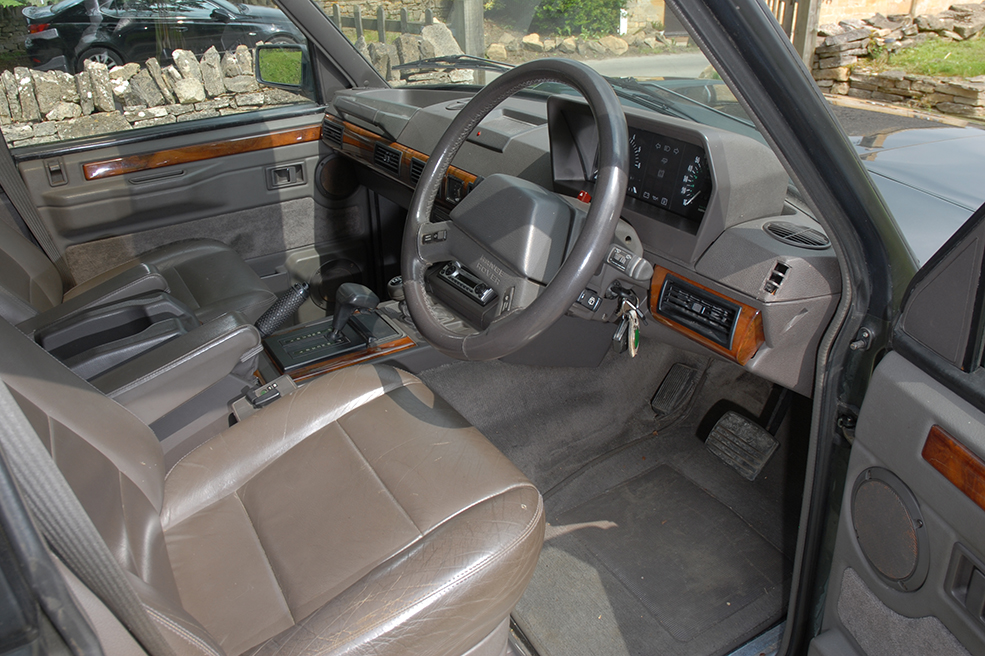
Range Rover Classic: our verdict
As a classic today, even the earliest Range Rover makes a remarkably practical choice, despite being close to fifty years old. Its straightforward construction and unfussy engineering make it highly DIY-friendly, though choosing a poor example can quickly cost as much as buying a sound one from the outset. Choose wisely and you’ll own a genuinely usable family classic – one that’s all but certain to retain its value for years to come.
MODEL TIMELINE
1966
Development begins with disguised Velar prototypes testing the blend of luxury and off-road ability.
1970
The two-door Range Rover launches with a 3.5-litre V8, offering both refinement and ruggedness.
1972
The Trans-Americas Expedition showcases the Range Rover’s strength on a 17,000-mile journey.
1974
A Range Rover wins the inaugural Paris–Dakar Rally, proving its endurance in extreme conditions.
1981
Four-door version is introduced, broadening its appeal to families and export markets.
1986
The first factory diesel, a 2.4 VM turbodiesel, expands its market reach.
1989
The 3.9-litre V8 arrives and ABS braking makes the Range Rover the first off-roader with this technology.
1992
Electronic air suspension debuts, giving greater comfort and versatility.
1994
Second-generation ‘P38a’ Range Rover launches, with the original renamed the ‘Range Rover Classic.’
1996
Production of the Classic ends after 26 years, with over 300,000 built.

